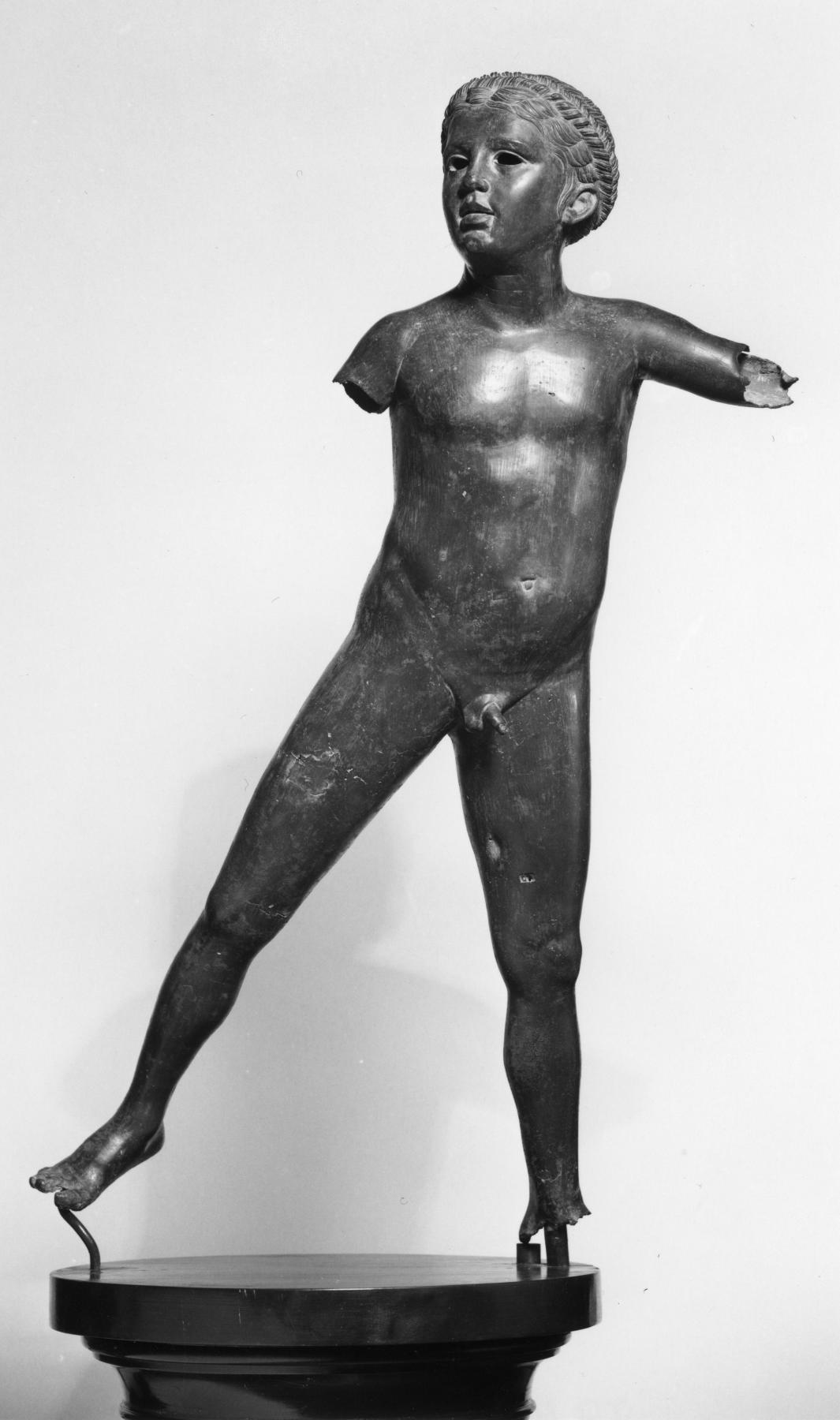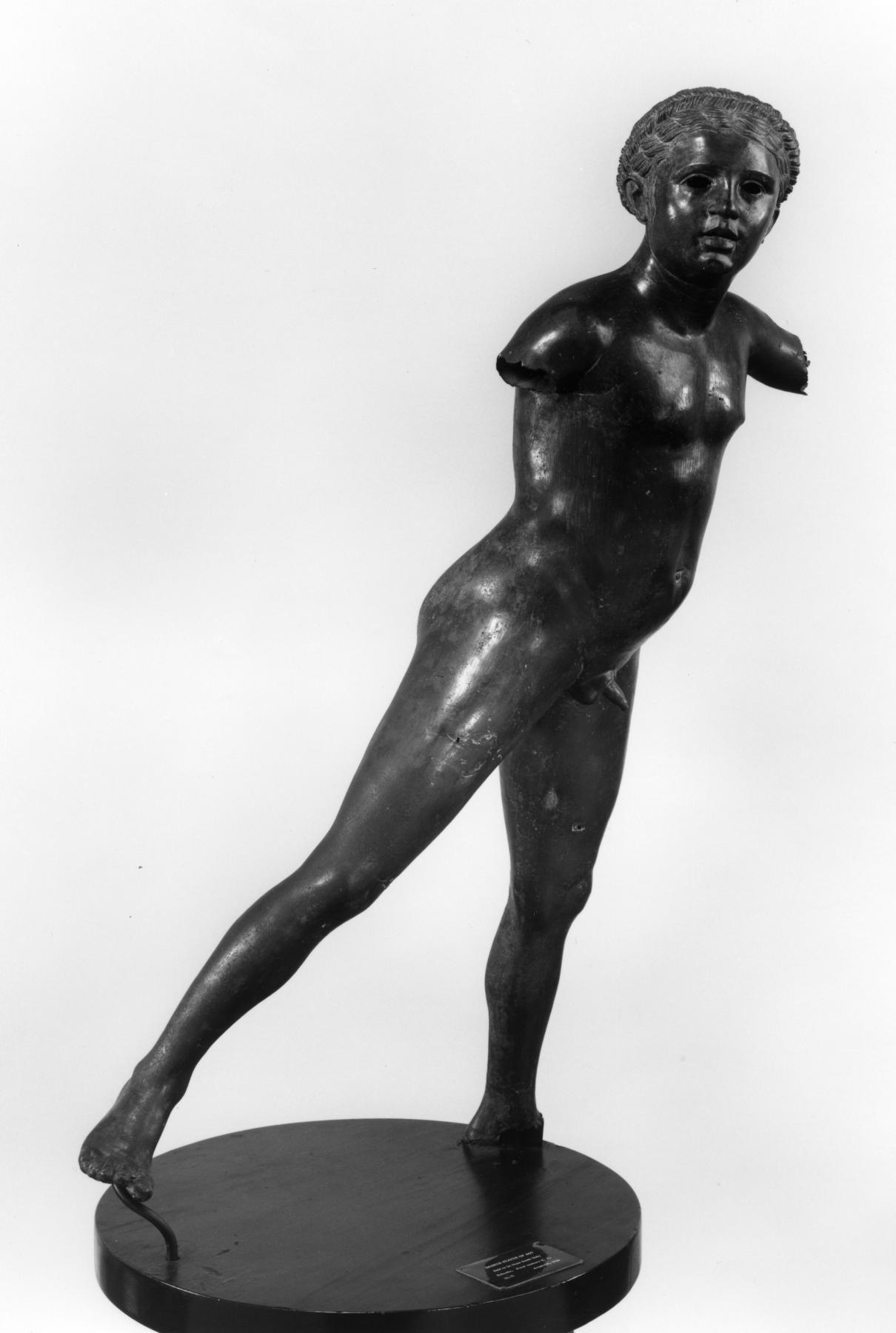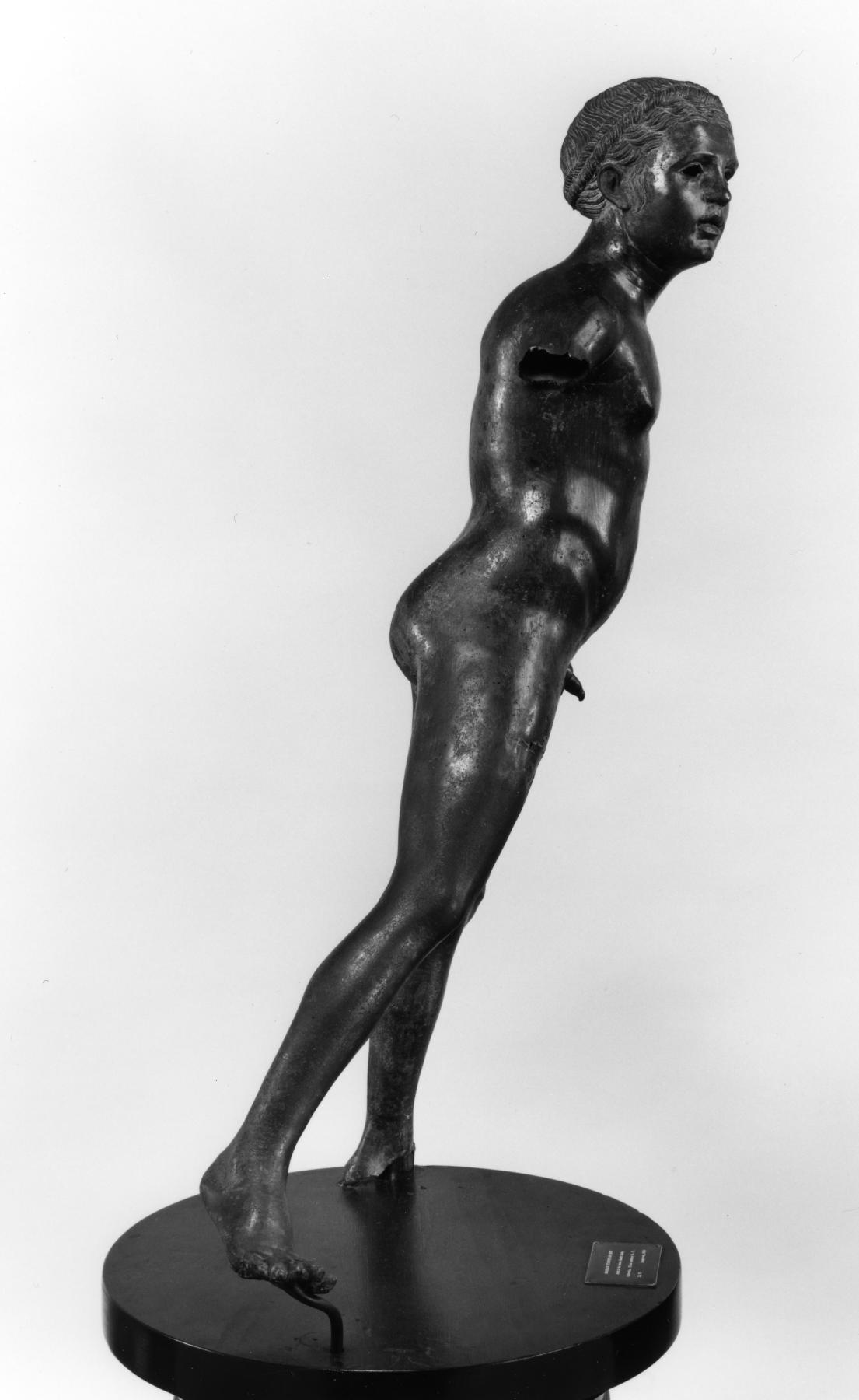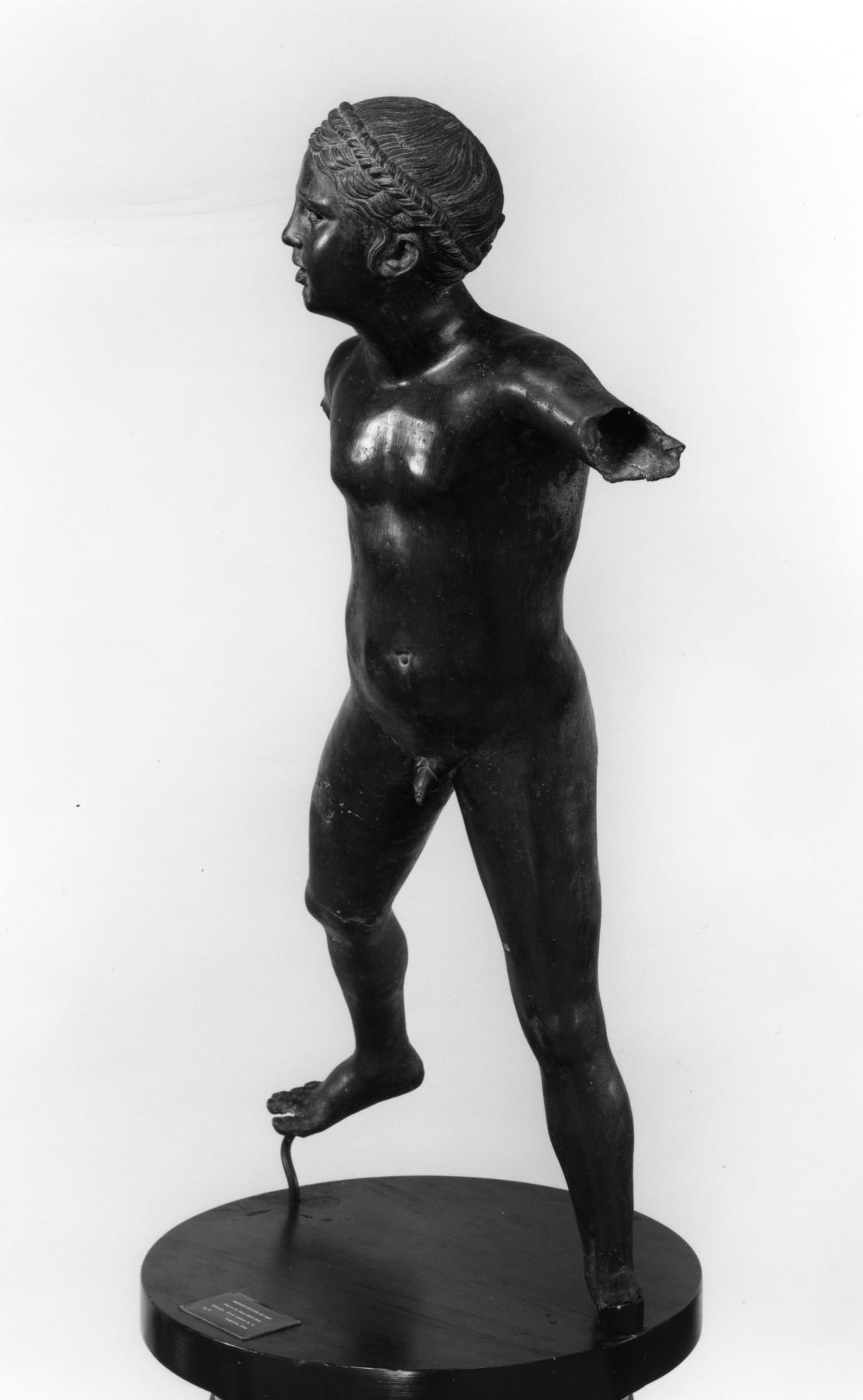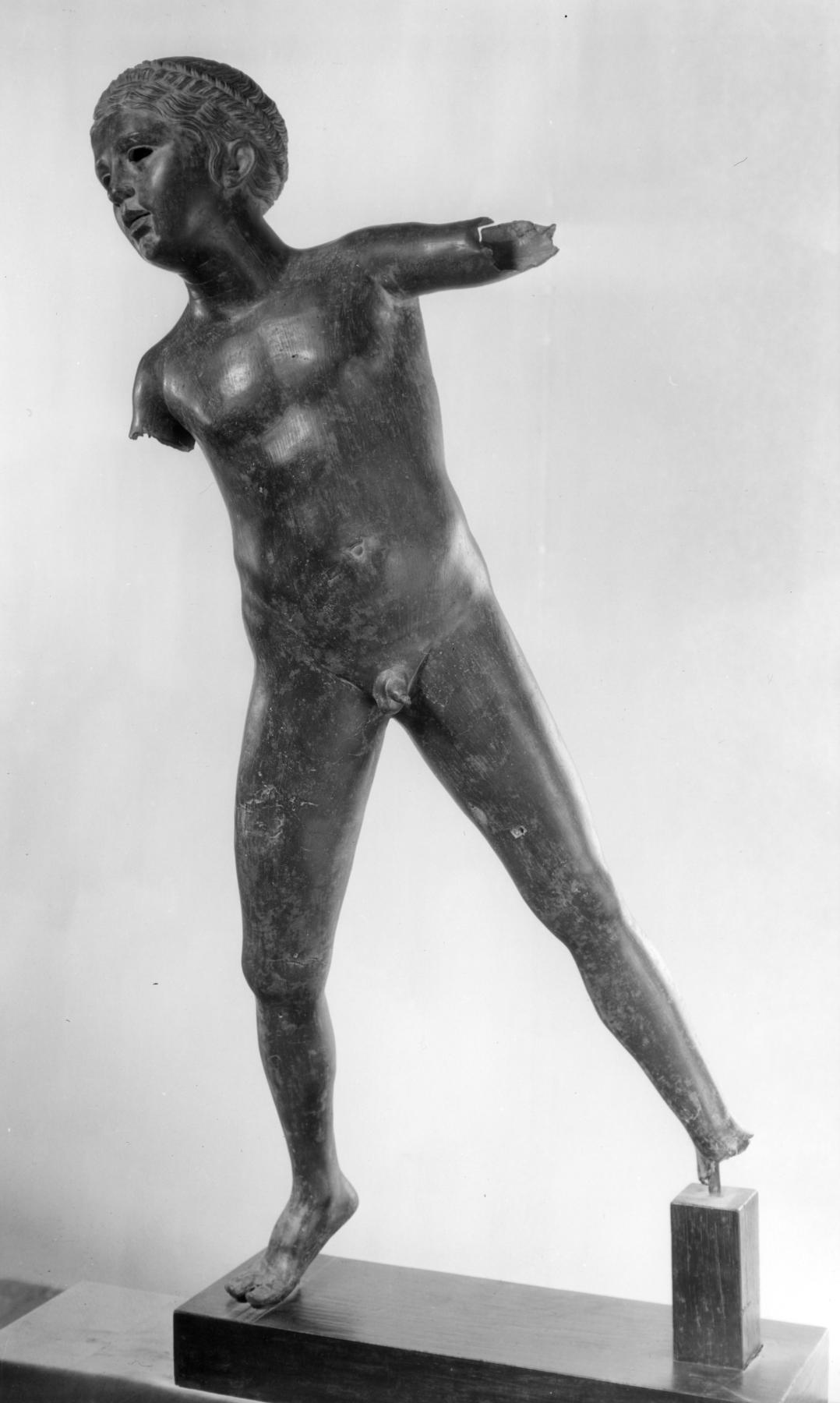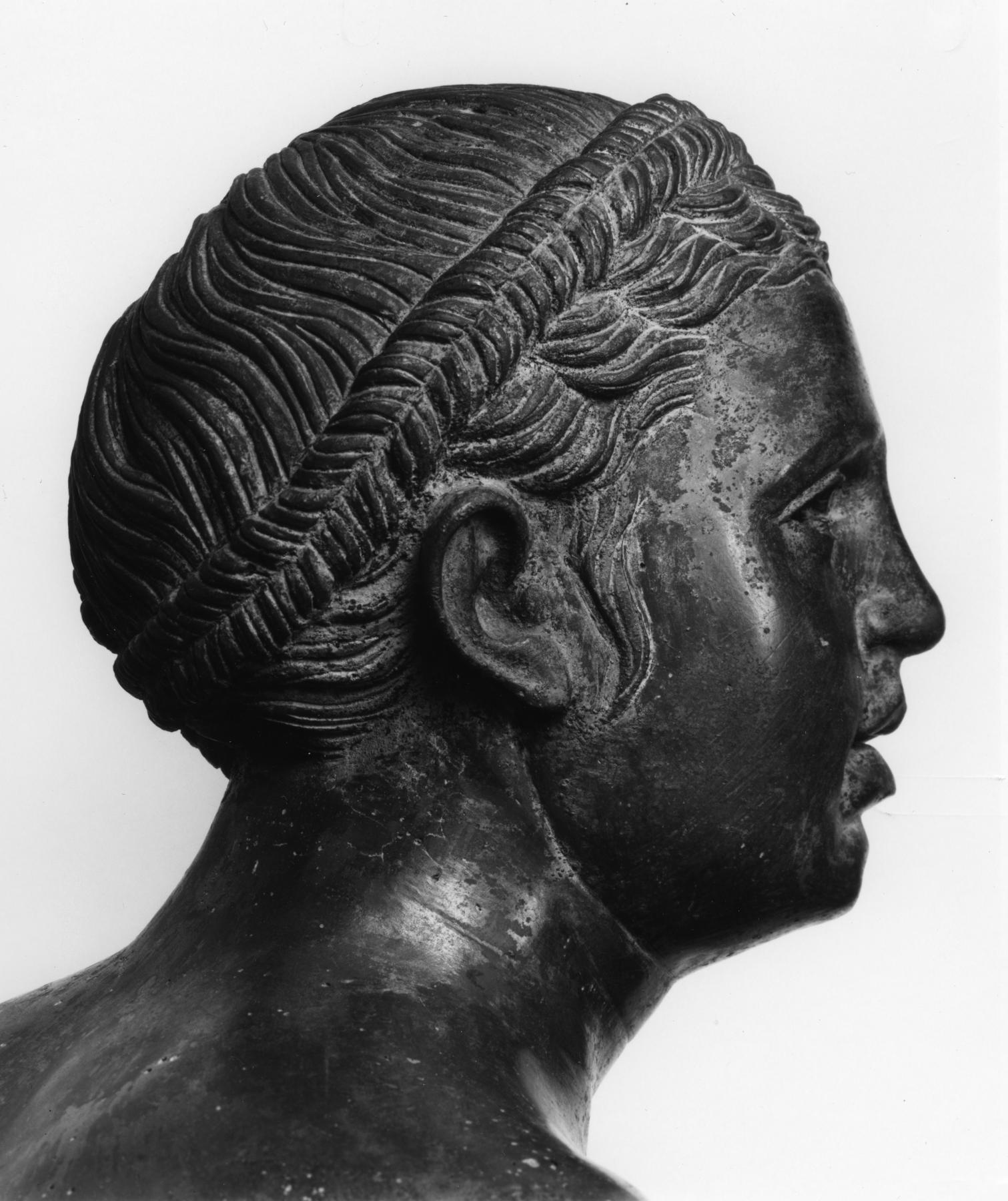Statue of a Boy
(Roman Empire )
This is a masterful example of early Roman bronze statuary. The proportions of the young boy in motion are not entirely in harmony, indicating that it was made by the process of "piece-mold" casting. In this technique, artists joined different body parts together in varying combinations, according to the desires of the patron. Similar bronze figures, carrying torches, have been excavated from Roman villas around the Mediterranean and may have functioned as decorative lamp-holders or garden statuary.
Provenance
Provenance (from the French provenir, 'to come from/forth') is the chronology of the ownership, custody, or location of a historical object. Learn more about provenance at the Walters.
Marchese Aniello Palmieri, Naples, [date and mode of acquisition unknown]; Dikran Kelekian, Paris and New York, [date and mode of acquisition unknown]; Henry Walters, Baltimore, 1924, by purchase; Walters Art Museum, 1931, by bequest.
Exhibitions
| 1996 | Fire of Hephaistos: Large Classical Bronzes from North American Collections. Harvard Art Museums, Cambridge; Toledo Museum of Art, Toledo; Tampa Museum of Art, Tampa. |
Conservation
| Date | Description | Narrative |
|---|---|---|
| Examination | condition | |
| 9/3/1975 | Treatment | cleaned |
| 9/22/1994 | Loan Consideration | examined for loan |
| 2/12/1996 | Treatment | cleaned; coated |
Geographies
Italy (Place of Origin)
Measurements
45 1/2 x 21 1/2 x 9 in. (115.5 x 54.6 x 22.8 cm)
Credit Line
Acquired by Henry Walters, 1924
Location in Museum
Accession Number
In libraries, galleries, museums, and archives, an accession number is a unique identifier assigned to each object in the collection.
In libraries, galleries, museums, and archives, an accession number is a unique identifier assigned to each object in the collection.
23.71

